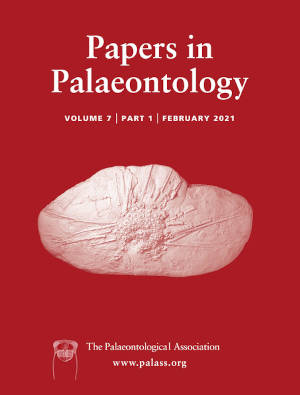Reg. Charity No. 1168330

Tiny snail-like conchs of Pelagiella Matthew are important in discussions of lophotrochozoan and mollusc origins in the Cambrian evolutionary radiation (CER). The limited morphological features of Pelagiella conchs have led to the ‘Pelagiella problem’: (1) poorly distinguished Pelagiella species; (2) an exceptional genus range across all Cambrian palaeocontinents and climate belts; (3) an unparalleled genus-lifespan (c. 31 myr) in the early Palaeozoic; and (4) the assumption that all Pelagiella spp. are gastropods, which compromises lophotrochozoan and mollusc phylogenies. The type species P. atlantoides is a gastropod, but we show that so-called Pelagiella species with sub-to-triangular apertures and turbiniform conchs are not referable to the genus. Re-evaluation of spectacular specimens of Pelagiella exigua Resser & Howell show it to be a polychaete with two apertural paleal chaetae fan arrays. Given that some modern sedentary polychaetes have paleal fan arrays, P. exigua is regarded as a likely member of the Sabellida Levinsen and is assigned to Pseudopelagiella gen. nov. Other Pelagiella spp. and forms with similar conchs are probably polychaetes not relevant to syntheses of early mollusc diversification. Pelagiellidae fam. nov. should be restricted to the late early Cambrian (c. 508 Ma) P. atlantoides. Pseudopelagiella exigua was unattached, probably benthic and lived with the apical conch surface on the sea floor, a mode of life similar to that of another family of the Sabellida, the sessile spirorbids that are cemented to substrate. Among numerous crown groups, the late early Cambrian eve of the CER included the polychaete Pseudopelagiella exigua and gastropod P. atlantoides.